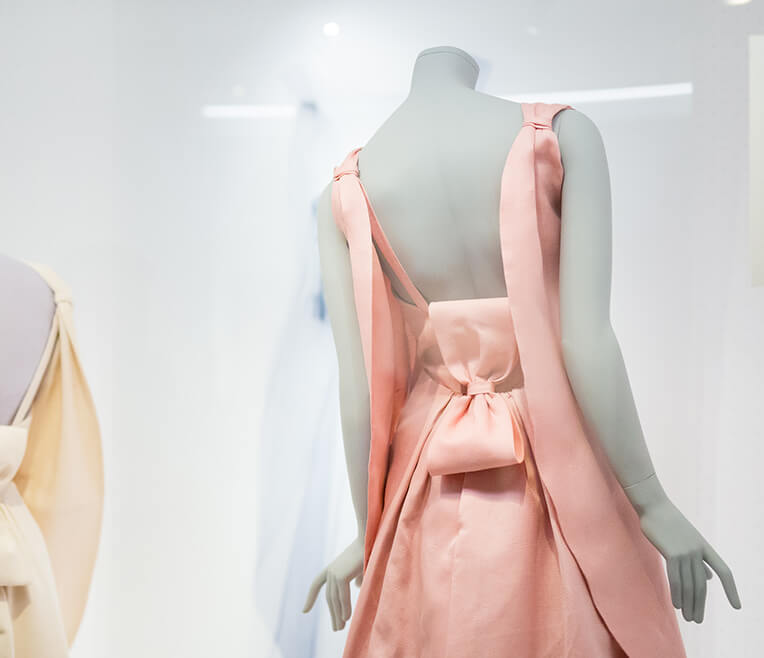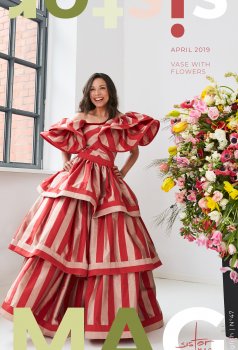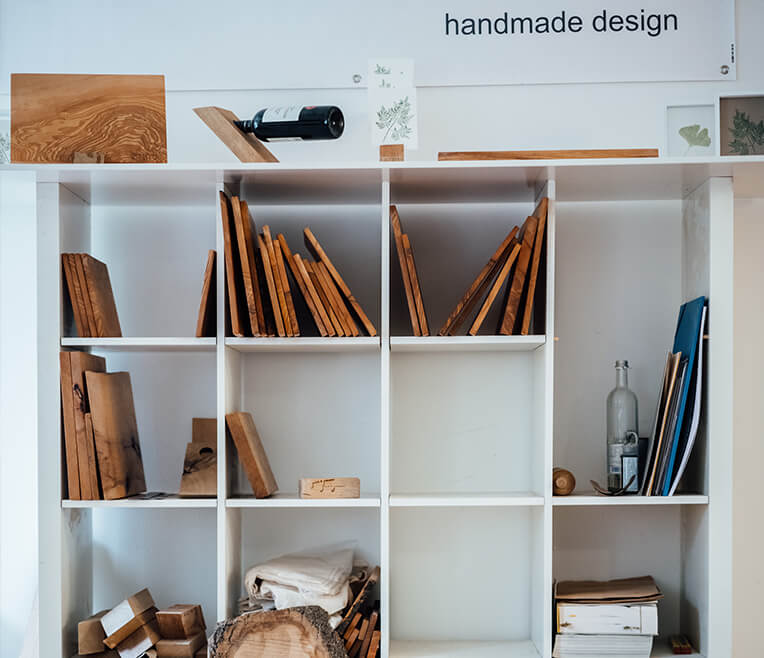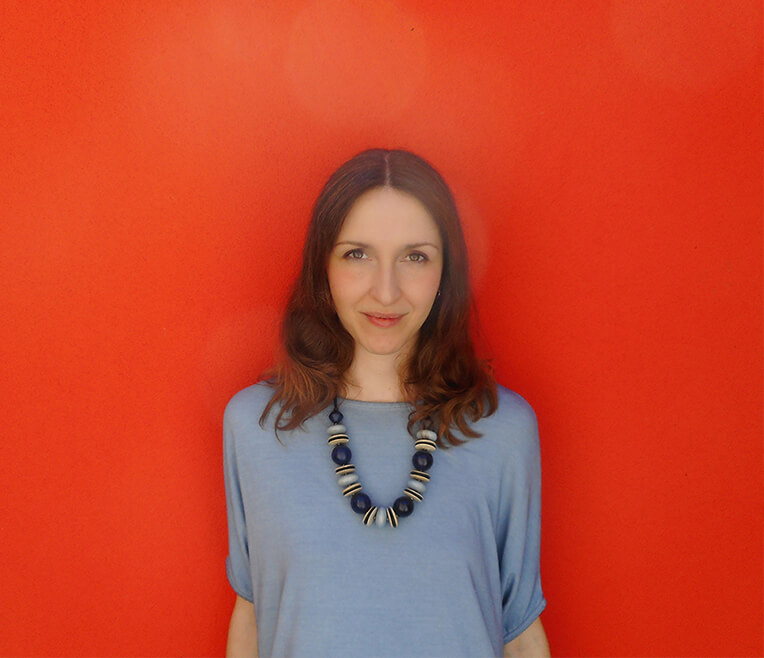
Botanical Illustrations: Irene Laschi
What exactly does an illustrator do? And how do you make botanical illustrations? sisterMAG-founder Thea chats to Florence-based illustrator Irene Laschi. Read everything about her work in the new issue of sisterMAG.
- Interview: Thea Neubauer
- Photography: Irene Laschi
How do you make a botanical illustration?
Interview with Irene Laschi
Tell us a little bit about yourself – who are you, what do you do and where do you live?
I’m Irene Laschi, a freelance illustrator. I was born in Siena, I made scientific studies and I have a degree in Prehistoric Archaeology too. I’ve always loved drawing, and when I was a teenager I spent all my free time doing it, but it was only after my degree that I realized I wanted to do it as a job. I’m living in Florence now – I moved to this city ten years ago to work as an illustrator: I worked in an illustration studio for a couple of years, and then I started working as a freelancer.
How did you get started with botanical illustrations?
Actually by chance! I’ve always known I didn’t want to draw fantasy or fictional subjects – I’ve never been too interested in storytelling, while I’ve always loved encyclopedias and descriptive, super detailed illustrations. I started with historical illustrations: as an archaeologist I’ve always loved historical reconstructions, and I’ve always thought that illustration is the best media to communicate difficult contents to a wide and non-specialized audience, both in books and museums. The studio I worked for was specialized in historical reconstructions, but not only, and my first important commission was a series of botanical illustrations for packaging… and that’s how I started drawing botanicals, and I fell in love with flowers and fruits! I put my portfolio online and I was contacted by my first clients, who asked for botanical subjects, and I’ve never stopped drawing these subjects since.
Would you describe yourself as a typical modern botanical illustrator? Or what is your commercial work like?
I love to describe myself as a commercial illustrator specialized in botanical subjects. I like to put the stress on the word “illustrator”. I’m not an artist or a painter, even if I use mainly traditional media to create my drawings. My job is closer to that of graphic designers rather than to artists: what should be enjoyed by the audience is not the unicum I draw on paper, but the copies (on packaging, on websites, etc.) – and I should be aware of that when planning the illustrations. Illustration is part of visual communication and has its own rules. “Commercial”, because my illustrations are used mainly in advertising and packaging: composition, colour palette and all the other main features of the illustration should be planned while thinking about that. They are scientific illustrations, but their aim is not (or not only) communicating scientific content. My illustrations have a modern style, made of a vivid colour palette and a realistic yet graphic effect – suitable for commercial aim.
What is your biggest challenge in your work?
For sure, planning everything carefully. At the very beginning, the main challenge was delivering everything at the highest quality and on time – I never studied at art schools, and I learned how to draw botanicals while doing the commissioned jobs (when you have to pay the rent and the bills, you learn really quickly!). But after ten years drawing botanical subjects, one of the main challenges is to never repeat a performance, especially with the same subjects. Growing tired of them is something I’m not worried about: I love botanicals too much, and, furthermore, each time the client is different, and my way of approaching the subject is different too – specific for that client only.
How do you achieve accuracy in the illustrations?
Even before planning the illustration, as soon as I know the subjects, I start studying and understanding them – the final illustration is a sort of summary of the previous analysis. Still-life sketching, photos, web and book research, and looking at old masters too, are fundamental steps: there’s no shortcut to achieving a good result. Composition and colour palette too are something that should be planned at the beginning: if they don’t work, the illustration doesn’t work. I’m quicker in drawing than ten years ago, but I never skip any of these steps.
What would you designate as the biggest difference between modern work and Renaissance artworks and illustrations?
In general, there are these main differences: the use of different technologies, a different market and, as a consequence, different timing. Furthermore, drawing was the only way to document the new discoveries and the world around in general until the end of the 19th century.
Thinking about botanical subjects only and about my job in particular, there are few differences but also some similarities between my work and the old masters – Renaissance artists but not only. Jacopo Ligozzi and Giovanna Garzoni, for example, are more artists than illustrators (they work for specific clients, the Medici and others, and create unique pieces). But the research and the scientific studies behind these drawings are the same as what a contemporary commercial illustrator like me does, just that the aim was different. In Giovanna Garzoni artwork, all the botanicals are realistic but there’s no hyperrealism, and scientific intent goes along with a personal and vivid colour palette – even if the result is different, my vision of naturalistic subjects is really close to hers.
Last but not least, both the old masters and I are the first of all artisans with a craft, and we have clients asking us for specific services and paying for them – sometimes it’s difficult to think about art and illustration as paid services in the social network era. I went to “bottega” (an Italian word both for the artist’s studio and his workshop) to learn a craft, learning the know-how from people who have been making this a job for years (and not through textbooks or schools), while making it – just like the old masters did. My “teachers” went to bottega too, and their teachers too, and so on: I like to think of it as a sort of direct line to the Renaissance.
Which materials and tools do you work with?
Mainly airbrush, acrylic inks and coloured pencils – but also watercolours, acrylic paint and gouache. I use these traditional media whenever possible, but actually I use Photoshop as well (especially for editorial illustrations). Airbrush was my first love – I bought my first one when I was 15, and I never stopped using it, first in my free time, then for my job. Usually botanical artists use only watercolour or coloured pencils: but as I’ve already said, I’m a commercial illustrator and not a botanical artist.
Have you ever wandered into other fields other than botanical illustrations?
As I said at the beginning, I started with historical illustration and archaeological drawing. Now 90% of my illustrations have botanical subjects, but I also draw naturalistic subjects in general (like animals or science book infographics and illustrations), as well as food illustrations and portraits. I love challenges, and different subjects are always a great opportunity to get out of my comfort zone, to learn new things and to be a better illustrator.
What role does digital play in your work?
I like to think about Photoshop (one of the few softwares I use) as a medium – nothing more, nothing less than the brush and the inks I use on paper. When creating digital artwork, the steps I make are the same: Photoshop layers are like different layers of paint, or different sheets of tracing paper (I started quite a long time ago, when sketches were made on tracing paper), and a brush is just a brush. Photoshop won’t solve the problems I could find if I don’t know how to solve them. Of course, digital makes a lot of things faster and easier (like adjustments and corrections), and to me it’s fundamental both for the initial planning and for post-production.
Florence and Tuscany are world-renowned for their famous lighting – does that play a role in your work at all?
Yes, I always carry with me “my” colour palette. I grew up in Siena’s countryside, surrounded both by nature and medieval art. But if I should describe my hometown, I’d talk about light: no other place has its pink and orange sunset, and it’s always amazing seeing this warm light on the city’s medieval buildings, made of pink bricks and pale, warm colours. Shadows are always violet and blue, no black and grey at all. Florence has the same warm light, but this time I won’t talk about pink and orange, but about yellow and ochre. In any case, this warm and vivid palette with no dark shadows is always recurring in my illustrations.
Have you always lived in Italy?
Yes, except for a couple of months I lived in Crete when I was studying archaeology.
How does Florence, as a city, influence your work? Does the world of the Medici and this rich history play a role in your daily or work life?
In Tuscany, we grow up surrounded by art masterpieces and medieval or Renaissance architecture: we always have beauty and art before our eyes, and they’re part of our everyday life (and often, sadly, all these things are taken for granted). Of course I love to travel, see new places and cultures, admire different architecture and lighting, but sometimes it is enough to walk across my cities and look at them with different eyes.
When I was a little child I spent hours in front of the medieval paintings of Ambrogio Lorenzetti, Simone Martini and Duccio di Buoninsegna; their colour palette and their love for detail influenced me a lot. And what about Florence: Uffizi, Gallerie dell’Accademia but also smaller museums and art collections, and churches too, are places I visit any time I can – each time I notice a different detail, I learn something new, I get inspiration for my illustrations. Medici’s art collections are something every illustrator (or artist) should see and study. One of my favourite painters in Medici’s collections is Jacopo Ligozzi: his botanical and naturalistic drawings on vellum are a milestone for botanical illustration. Giovanna Garzoni too learned from his drawings (they never met), and that’s clear in her approach. Learning from old masters is something we should never be tired of – we’re just dwarves standing on the shoulders of giants.






